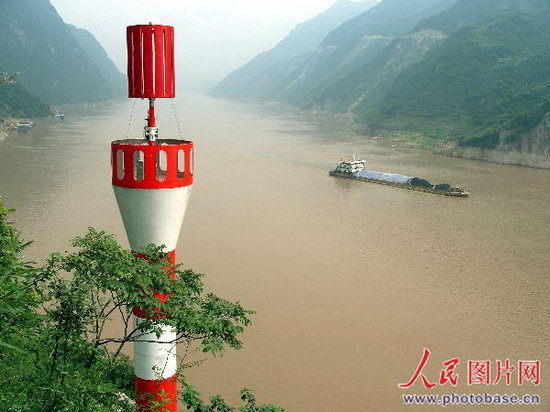The Yangtze River waterway administration has announced that it will use solar power for the more than 5,700 marker lights along China's busiest waterway.
All 5,700 of the battery-powered navigation mark lights along the world's third longest river will gradually be replaced with domestically produced solar-powered lights over a two-year period, Wang Qufa, an official with the Wuhan-based Yangtze waterway bureau, said Thursday.
 |
|
September 1, 2008; a steamship, guided by a navigation light, passes through the Xilingxia section of the Yangtze River in central China's Hubei Province.
|
"Solar powered lights will cut costs because there is no need to maintain them until five years after they have been installed. They also avoid the use of pollutant lead-acid batteries," he said.
The present navigation mark lights have a service life of two years, and their batteries need replacing every three months, he said.
"It would cost at least 4,000 yuan (US$583) to keep the battery-powered lights working over a five-year period, but only 1,200 yuan to use solar-powered lights," he said.
Domestic research staff have designed seven types of light to suit the climate along various sections of the river, he said.
"One model generates continuous light for a month, even when the weather is overcast two weeks," he said.
High-grade waterways of the future will all be equipped with solar-powered navigation mark lights, Zheng Qingxiu, an official in charge of waterway management with the Ministry of Transport, told China Daily.
The ministry is also applying remote monitoring and measuring technologies to inland waterways that raise the alarm when a navigation mark light moves out of position.